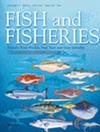小规模渔业不平等的概念化和评估
IF 6.1
1区 农林科学
Q1 FISHERIES
引用次数: 0
摘要
本综述采用定性和定量相结合的方法分析了73篇同行评议的出版物,以研究小规模渔业中的不平等是如何概念化的,哪些驱动因素最常被发现,它们是如何表现的,以及拟议的干预措施如何解决这些问题。文献显示,“不平等”、“不平等”、“不公平”或“不公正”等术语之间存在一些概念重叠,这可能反映了跨学科的多样性,也反映了不平等通常通过更广泛的框架(例如贫困;治理)。不平等的社会和监管层面——特别是性别/性别排斥和政策实施——是最常被研究的,而技术、环境和保护相关方面的研究较少。大多数研究集中在提取阶段,较少涉及价值链下游环节的不平等。结果表明,不平等驱动因素在模式配置中共同发生,反映了更广泛的结构动态(例如,沿海渔业中性别排斥、市场壁垒和不公平政策实施之间的相互作用)和交叉性(例如,土著女渔民同时面临基于性别、种族和缺乏正式治理或金融体系的排斥)。然而,为解决这一问题而提出的干预措施似乎与它们旨在解决的具体驱动因素不够一致。这些模式反映了在社会保障基金中解决不平等问题的复杂性:虽然这个问题得到了广泛承认,但它往往是通过支离破碎的术语和不连贯的回应来处理的。取得进展可能不需要更多的共识,而需要在如何描述、定位和采取行动方面更加精确。本文章由计算机程序翻译,如有差异,请以英文原文为准。
Conceptualisation and Assessment of Inequality in Small‐Scale Fisheries
This review analyses 73 peer‐reviewed publications using a combined qualitative and quantitative approach to examine how inequality in small‐scale fisheries is conceptualised, which drivers are most frequently identified, how they manifest, and how proposed interventions address them. The literature shows some conceptual overlap among terms such as ‘inequality’, ‘inequity’, ‘unfairness’ or ‘injustice’, which may reflect both interdisciplinary diversity and the fact that inequality is often addressed indirectly through broader frameworks (e.g., poverty; governance). Social and regulatory dimensions of inequality—particularly sex/gender exclusion and policy implementation—were the most frequently studied, while technological, environmental and conservation‐related dimensions were addressed less frequently. Most studies focused on the extraction stage, with fewer addressing inequalities along downstream segments of the value chain. The results reveal that inequality drivers co‐occur in patterned configurations reflecting broader structural dynamics (e.g., the interplay between gender exclusion, market barriers and inequitable policy implementation in coastal fisheries) and intersectionality (e.g., indigenous women fishers facing simultaneous exclusion based on gender, ethnicity and lack of access to formal governance or financial systems). However, proposed interventions to address the problem seem insufficiently aligned with the specific drivers they aim to address. These patterns reflect the complexity of addressing inequality in SSF: while the issue is widely acknowledged, it is often approached through fragmented terms and disconnected responses. Making progress may require not more consensus, but more precision—in how inequality is described, situated and acted upon.
求助全文
通过发布文献求助,成功后即可免费获取论文全文。
去求助
来源期刊

Fish and Fisheries
农林科学-渔业
CiteScore
12.80
自引率
6.00%
发文量
83
期刊介绍:
Fish and Fisheries adopts a broad, interdisciplinary approach to the subject of fish biology and fisheries. It draws contributions in the form of major synoptic papers and syntheses or meta-analyses that lay out new approaches, re-examine existing findings, methods or theory, and discuss papers and commentaries from diverse areas. Focal areas include fish palaeontology, molecular biology and ecology, genetics, biochemistry, physiology, ecology, behaviour, evolutionary studies, conservation, assessment, population dynamics, mathematical modelling, ecosystem analysis and the social, economic and policy aspects of fisheries where they are grounded in a scientific approach. A paper in Fish and Fisheries must draw upon all key elements of the existing literature on a topic, normally have a broad geographic and/or taxonomic scope, and provide general points which make it compelling to a wide range of readers whatever their geographical location. So, in short, we aim to publish articles that make syntheses of old or synoptic, long-term or spatially widespread data, introduce or consolidate fresh concepts or theory, or, in the Ghoti section, briefly justify preliminary, new synoptic ideas. Please note that authors of submissions not meeting this mandate will be directed to the appropriate primary literature.
 求助内容:
求助内容: 应助结果提醒方式:
应助结果提醒方式:


